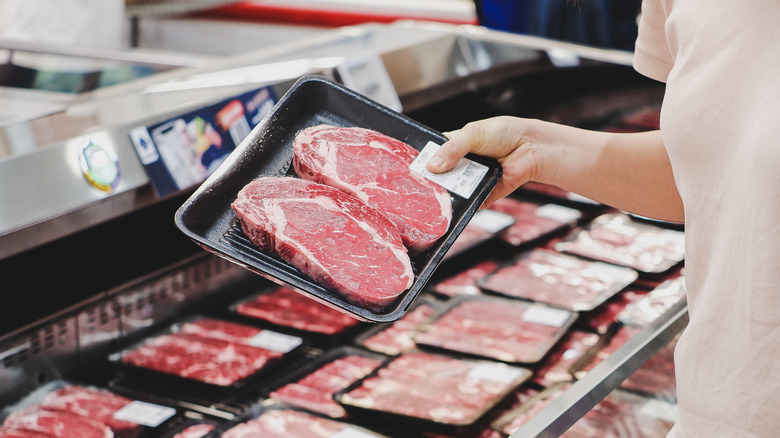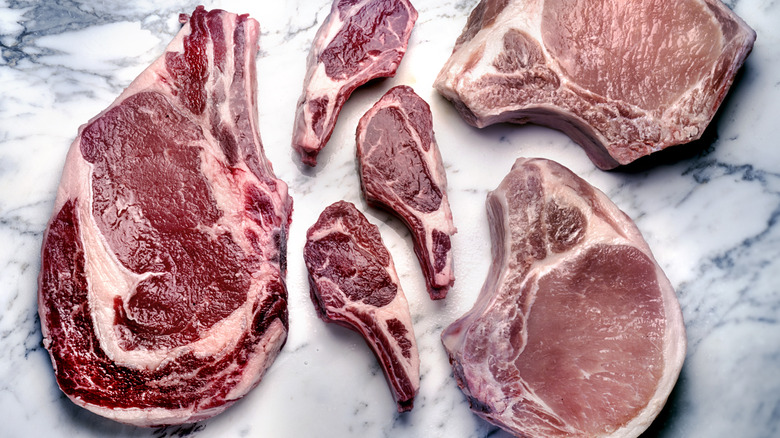What It Means If Beef Is Purple, And Why You Should Avoid Buying It
Whether you're after perfectly marbled steaks or a package of mince, there are certain traits to seek out when buying beef. While clues regarding texture and aroma can be helpful, one of the simplest ways to judge the quality of beef is by looking at its appearance. In the vast display case of meat products, crimson-colored beef is typically synonymous with ultimate freshness. So, where does that leave purple beef? Somewhere between burgundy and brown, purple beef can be visually puzzling, which is why it's usually best to trust your instincts and pass on the darkly-hued protein.
The reality is that the color of fresh beef is directly affected by a protein in muscle tissues called myoglobin. Based on the amount of oxygen that myoglobin is exposed to, color can fluctuate between purple, red, or brown. In a zero-oxygen environment, such as before slaughter, the protein is purple. Once butchered the myoglobin is exposed to oxygen; this triggers beef to turn bright red. Eventually, as meat rests in a display case, extended oxidation will prompt the protein to turn brown. Since colors will continue to darken as beef starts to decay, the meat may take on a gray-ish purple tint, which can be a bit problematic.
Given that it may be difficult to differentiate fresh beef in a deoxymyoglobin state from meat that is starting to experience signs of spoilage, you might want to think twice before placing the purple-tinged protein in your shopping cart.
When purple beef becomes a deal breaker
Purple beef raises valid concerns. Beyond its off-putting appearance, it's fair to wonder whether the meat boasts an equally unusual flavor or texture, and if it should even be consumed. The answers to these questions depend on a few factors relating to how the beef was raised, slaughtered, packaged, and stored.
In several circumstances, purple beef isn't cause for worry. For instance, free range beef often has a darker hue due to diet and activity. Even age or heightened stress levels prior to slaughter can give the meat a purple undertone. Alternatively, the deoxygenation of myoglobin from dry aging or special packaging that makes steaks last longer also results in a deep mulberry shade. In either case, the meat is safe to eat. The only peculiarity is that the beef may have a subtle metallic taste, which might not be appealing for some.
Conversely, dark purple hues could also indicate spoilage. With the passage of time, oxidation as well as microbial growth can take hold of beef, dulling quality until the meat is rendered inedible. Should the beef be accompanied by a slimy or sticky exterior and sour smell, these are clear signs that it is rotten, and should be tossed immediately. That said, if you still find it hard to decipher whether purple beef is harmless or harmful, don't take the risk — skip it for something scarlet.

